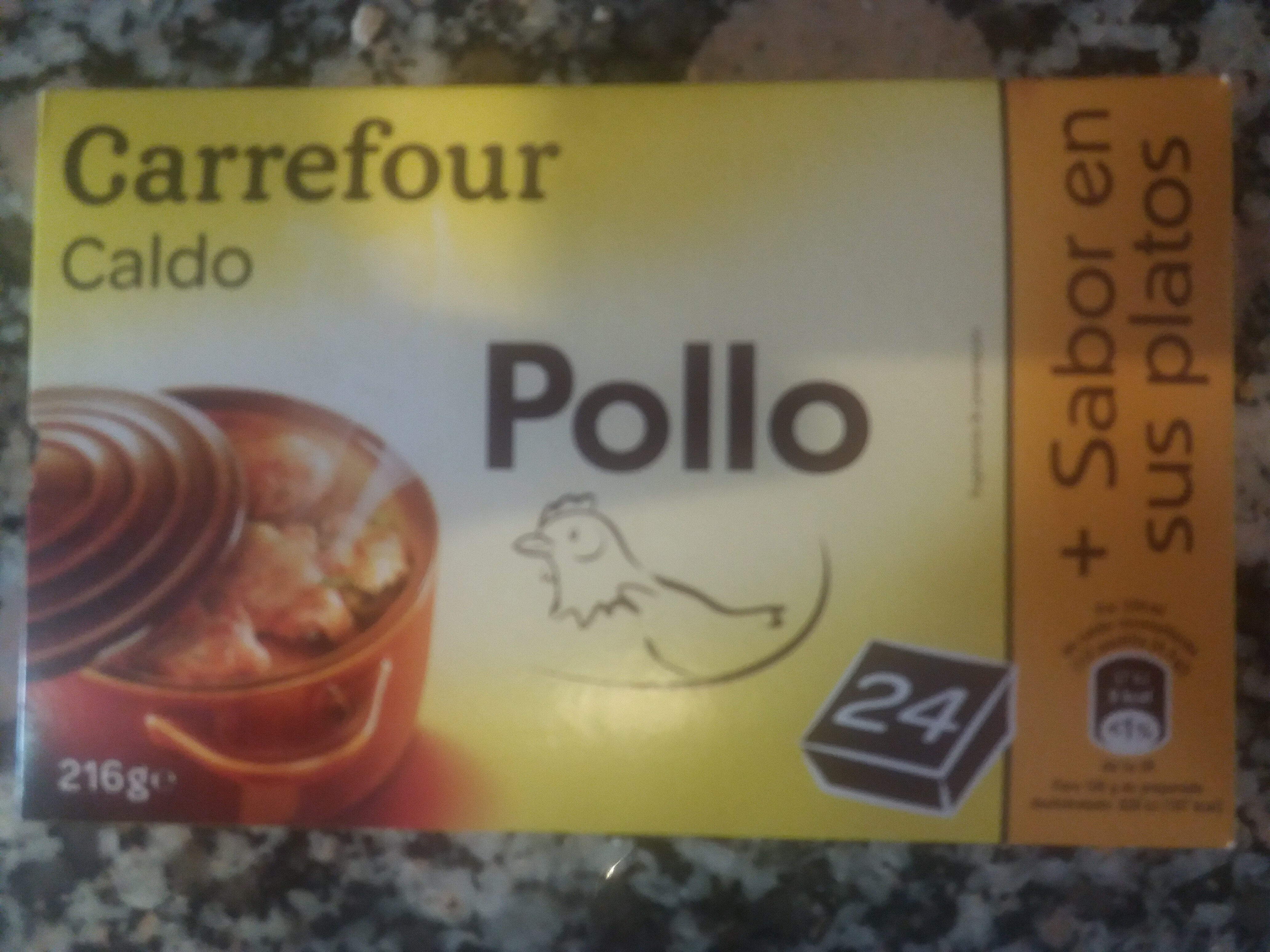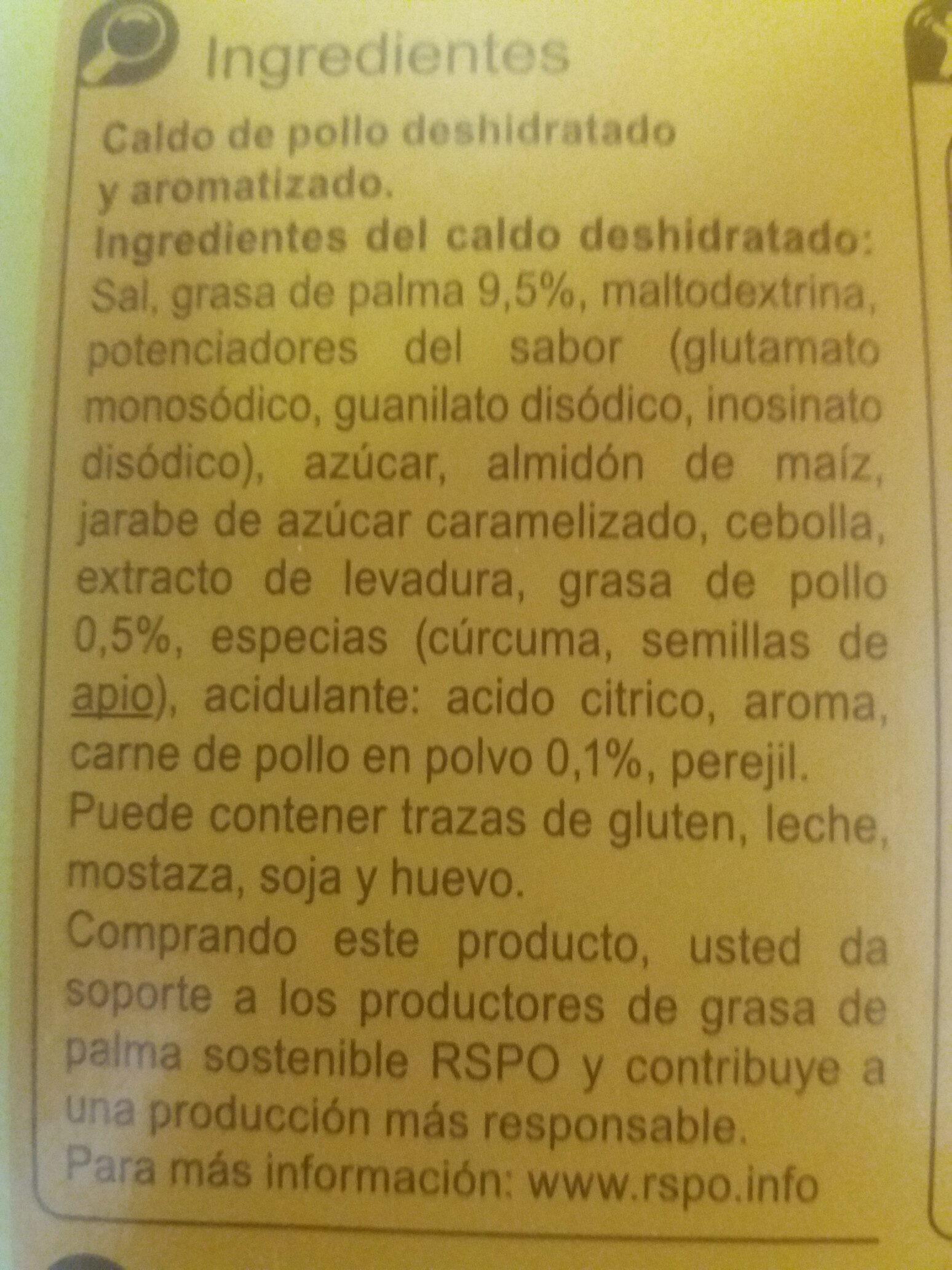Caldo pollo - Carrefour - 216 g
This product page is not complete. You can help to complete it by editing it and adding more data from the photos we have, or by taking more photos using the app for Android or iPhone/iPad. Thank you!
×
Barra-kodea: 3560070808373 (EAN / EAN-13)
Kopurua: 216 g
Ontziratzea: es:9 gramos
Markak: Carrefour
Kategoriak: en:Dried products, en:Dried products to be rehydrated, Salda, en:Dehydrated broths, en:Bouillon cubes, en:groceries
Etiketak, ziurtagiriak, sariak: es:C
Manufacturing or processing places: Alemania
Link to the product page on the official site of the producer: http://www.carrefour.es
Dendak: Carrefour
Saltzen diren herrialdeak: Espainia
Matching with your preferences
Ingurumena
Ontziratzea
Transportation
Threatened species
Report a problem
Datuen iturria
Product added on by openfoodfacts-contributors
Last edit of product page on by acuario.
Produktuaren orria -gatik editatua kiliweb, musarana, yuka.R3FsUkNvNEJsOTRPZ01jKzB4ckgzZkpKbmJ5cVl6Mk1LZmd2SVE9PQ.








